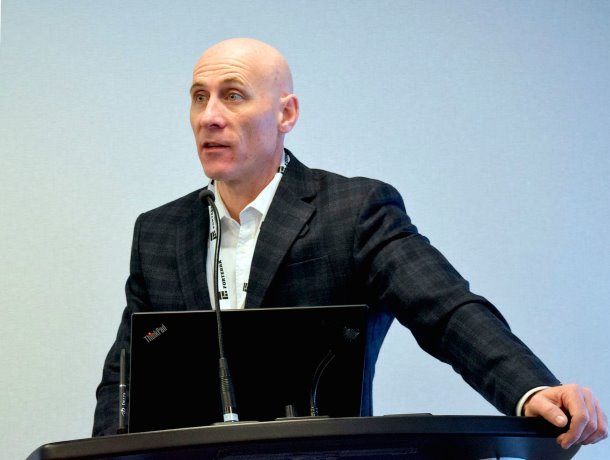The sewer and watermain sector is a tight-knit group, said Giovanni Cautillo, executive director of the Ontario Sewer and Watermain Construction Association (OSWCA), with lots of family-owned small-and medium-sized businesses.
Combine this with two other factors: an aging boomer demographic with many owners set to retire, and the fact that the sector itself is not really a magnet for outsiders so businesses are often passed along generation to generation. It makes the topic of succession planning especially important for OSWCA members.
For its annual conference in Kingston, Ont. last month, the OSWCA recruited veteran consultant Stephen Hall of the Cobourg, Ont.-based firm Pace Network to walk members through the process.
Cautillo explained the rationale.
"We need contractors to think about it for the longevity of their companies, and how to hand it off to the next generation," he said. "It is a multigenerational sector. You don’t just wake up and say, I want to be in the sewer and watermain business. It is something that is handed down to the next generation.
"We have companies that are in their third and fourth generation, so we look at how does this work for the membership, is this value added for the membership, and we think it is."
Hall presented two case studies he encountered in his practice with divergent outcomes.
"I had one client that transferred the business to the son," said Hall. "Everything was great. The dad had to relinquish everything, there were no issues with that.
"But dad didn’t have hobbies or interests anything like that, his whole life was the business, that’s all he knew and so after the exit he wanted to stick around. Because of the relationship, he shows up, doesn’t get involved in business management or administration and he jumps on a piece of equipment whenever he feels like it. The expectation is that when he shows up he’s an extra hand for a day."
Here the family dynamics worked out, but Hall presented another case where a father was passing the business on to two sons who had different views on how the company should move forward, and the views were never reconciled.
"It’s probably 12 years since they have had a conversation," said Hall. "I can hardly imagine what Christmas is like when one of your kids isn’t speaking to another at the Christmas table."
Besides ensuring a comfortable retirement for the company president, the key goals of a succession plan, said Hall, are to protect the value of the company while ensuring the company’s legacy.
Unfortunately, he explained, the numbers are not very encouraging — which should provide OSWCA members with the motivation to get it right.
Of 1,600 family businesses surveyed in one survey, 47 per cent had no succession plan.
In another study, while 80 per cent of first-generation firms intended to transition, only 30 per cent of the companies successfully made the transition.
That means only 24 per cent, or a quarter of family businesses, live on to a second generation.
If executed properly, said Hall, there is time to find the best fit as a successor, the retirement of the departing president is financed, the legacy of the firm is retained, the family connections remain solid and the workforce remains employed and onside with the new regime.
But if it is done poorly, there is poor transition or no transition, the company could be forced to close, there is no money for retirement, the family is fighting and the workers are unemployed.
"Having a proper plan in place that’s going to outline all the issues you need to deal with is going to protect the financing for your retirement fund," Hall told OSWCA members.
To achieve success, the process he recommends is: identify the key executive positions, assess the skills that will be needed, evaluate the people, develop a plan and monitor the plan.
In evaluating talent on the tier below the owner, said Hall, planners need to ascertain how many people are going to be moving forward with the company.
Having a plan in place for this tier can help alleviate or eliminate any potential infighting that might occur as executives jockey for new positions.
Without a plan, "you end up with power struggles and people who have a perceived sense of entitlement or expectations," said Hall. "Having a plan in place really delineates the roles and responsibilities for each of the team members going forward, how they fit into the future of the business, why it’s going down that path, why they were picked for that role and so forth."
In the end, said Hall, it’s about perpetuating a legacy.
"Driving on the street 20 years from now, there’s the sign and you can feel good, saying, ‘Hey man I started that, that was me 40 or 50 years ago’," said Hall. "I was able to get the business going and I was able to perpetuate it."





Recent Comments
comments for this post are closed